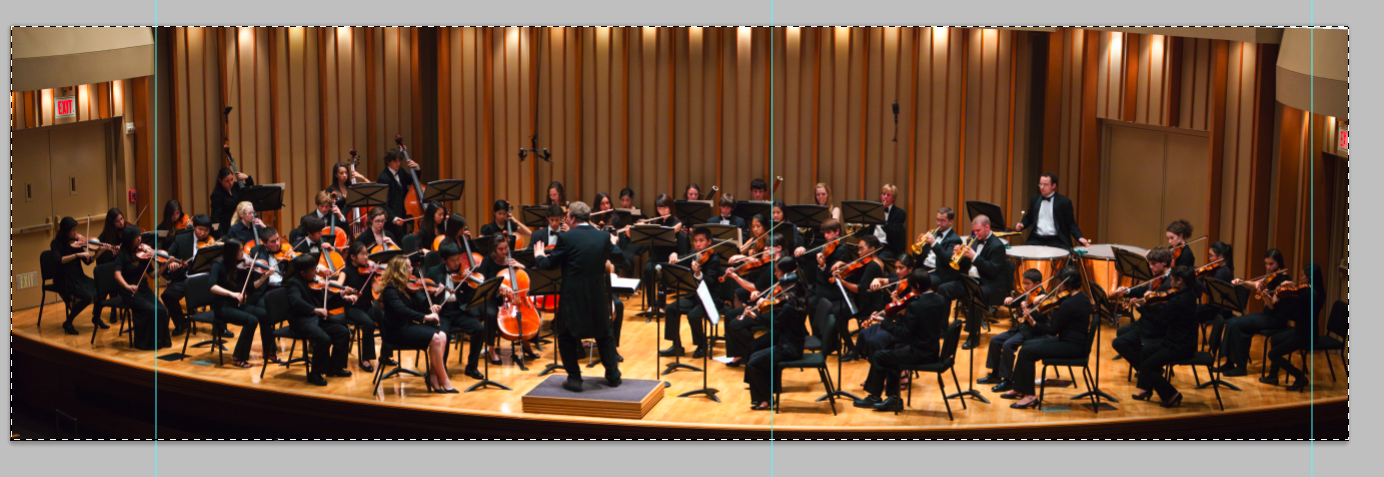Asher Kelman
OPF Owner/Editor-in-Chief
Those of you who follow my passion for the experience at The Colburn School of Music, Grand Avenue know that the noise of a DSLR shutter is disturbing to everyone! I have gone around the issue of the unsatisfactory lighting all concert halls seem to have by slightly under-exposing at a lower ISO and then recovering highlights in RAW processing. That delivers excellent newsworthy pictures, albeit with some noise in the blacks but it's not noticeable after reducing the files for publication for print and the web. For large size the noise can be removed.
First the idea of stitching overlapping frames. In order to make a superb print that can be enlarged with detail holding in in a stage full of musicians, I ventured here to zoom in and get the picture in 3 sections. This picture is the first one I have gone that extra step of stitching 3 horizontal frames during a performance with so many limbs moving and the conductor jumping all over the place. That was a huge challenge! (I'll discuss how I solved the shutter sound problem shortly in post # 2 below).
So, I looked for 3 frames where the orchestra was doing the same set of movements in the instruments even though the frames are several apart. I simply used Photoshop's, "Photomerge" under "Automate". The position of the conductor was not the one I wanted so I masked out that figure and unmasked the one I preferred.
The panostitch showed some perspective issues and here's the result with blue guide lines to reference verticality.

Here's the picture of the Orchestra corrected in Photoshop under Edit-Transform-Perspectve

Asher Kelman: The Colburn School Orchestra da Camera
More to follow!
Asher
For the next free performance go to The Colburn School website, here.
First the idea of stitching overlapping frames. In order to make a superb print that can be enlarged with detail holding in in a stage full of musicians, I ventured here to zoom in and get the picture in 3 sections. This picture is the first one I have gone that extra step of stitching 3 horizontal frames during a performance with so many limbs moving and the conductor jumping all over the place. That was a huge challenge! (I'll discuss how I solved the shutter sound problem shortly in post # 2 below).
So, I looked for 3 frames where the orchestra was doing the same set of movements in the instruments even though the frames are several apart. I simply used Photoshop's, "Photomerge" under "Automate". The position of the conductor was not the one I wanted so I masked out that figure and unmasked the one I preferred.
The panostitch showed some perspective issues and here's the result with blue guide lines to reference verticality.

Here's the picture of the Orchestra corrected in Photoshop under Edit-Transform-Perspectve

Asher Kelman: The Colburn School Orchestra da Camera
More to follow!
Asher
For the next free performance go to The Colburn School website, here.
